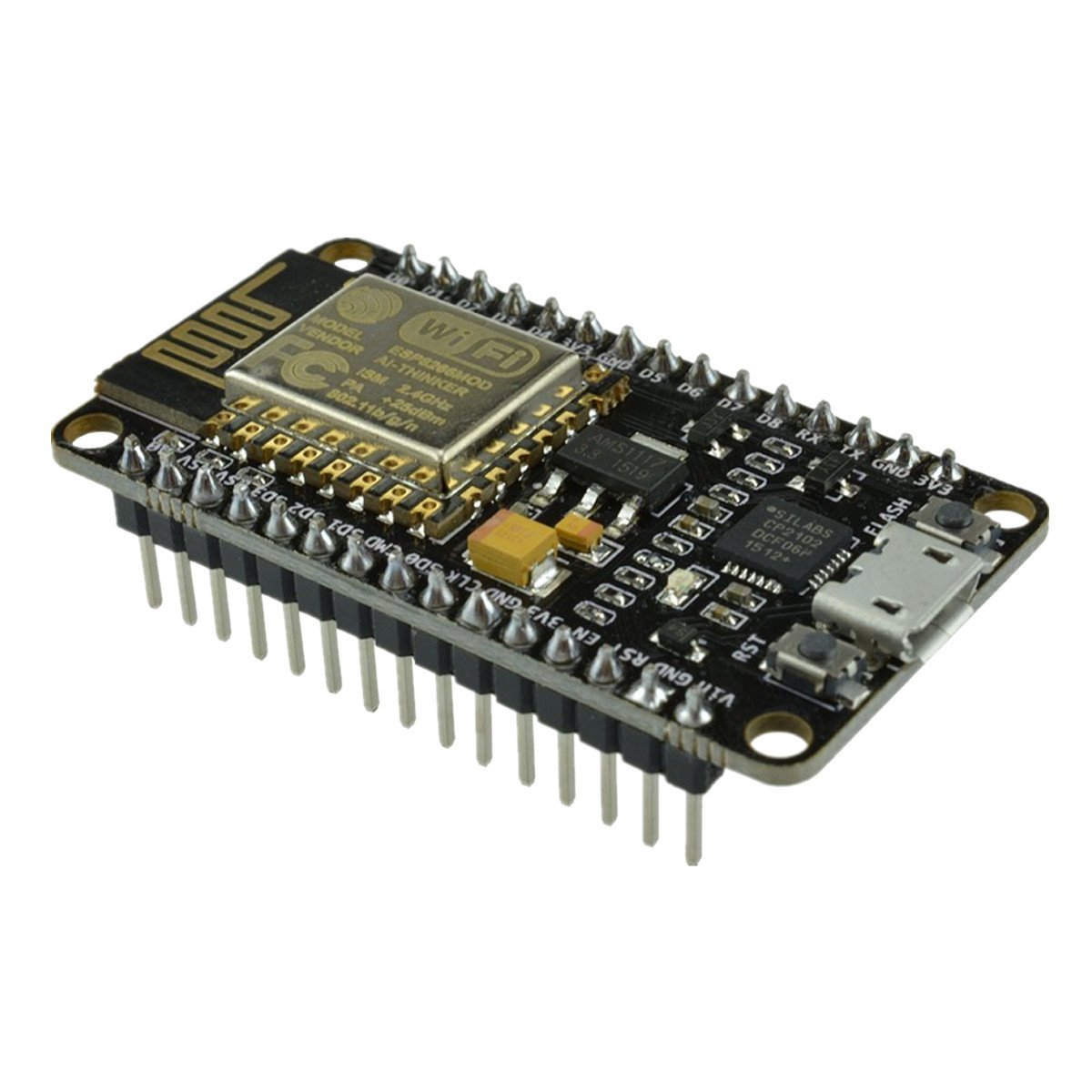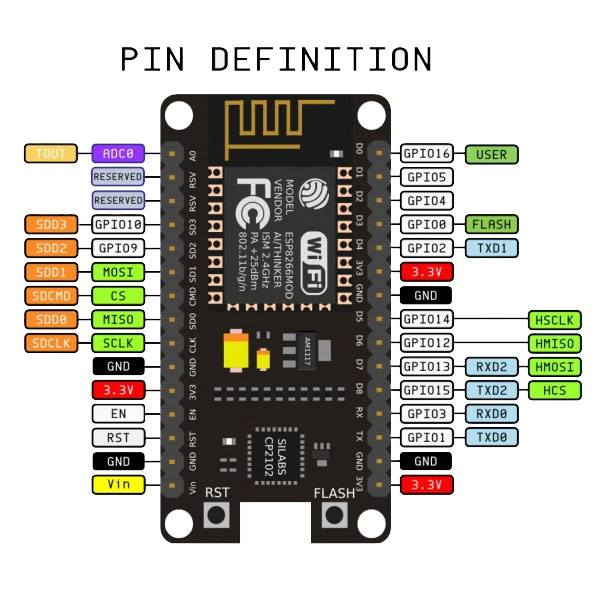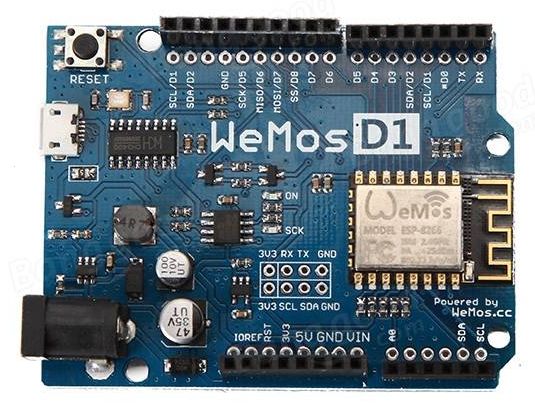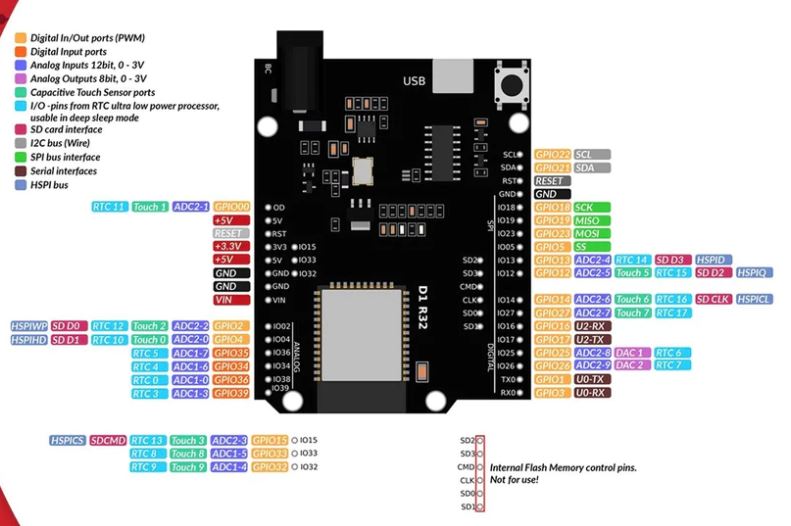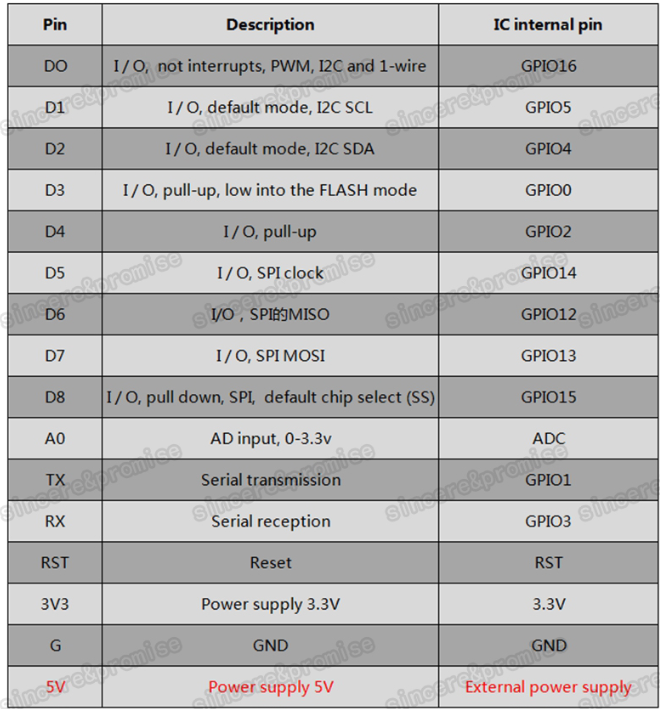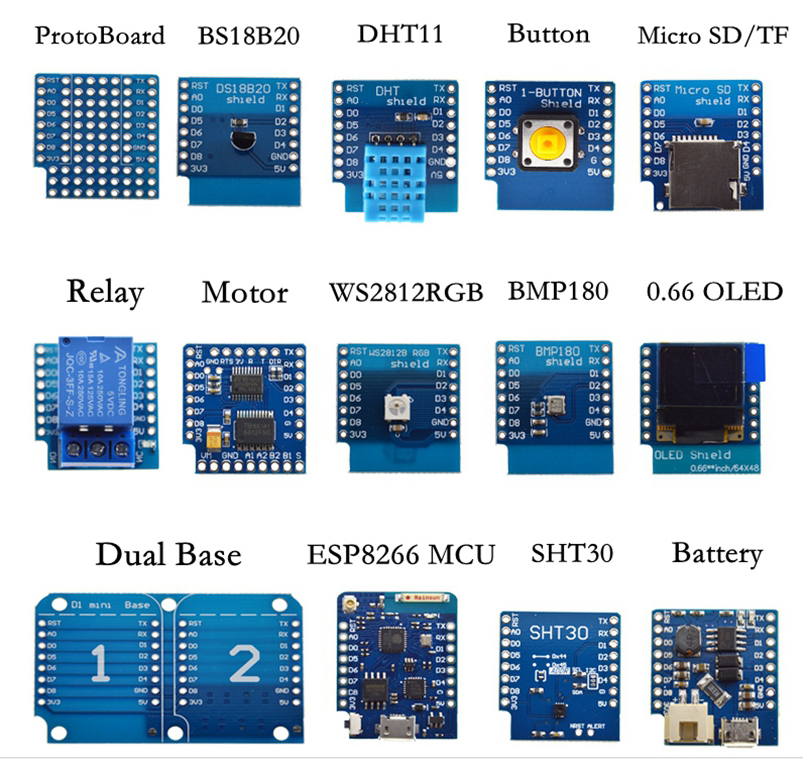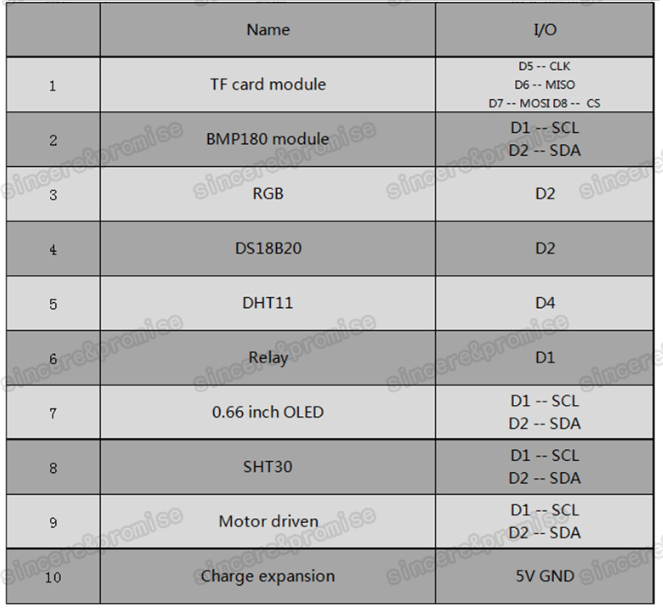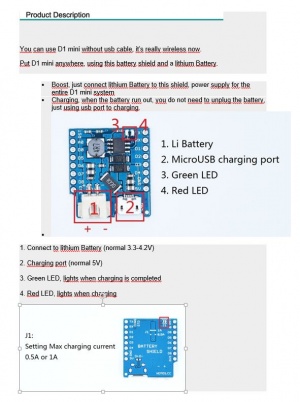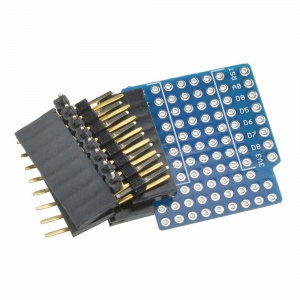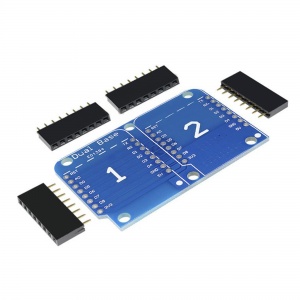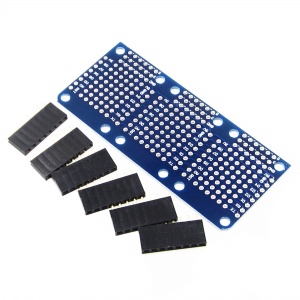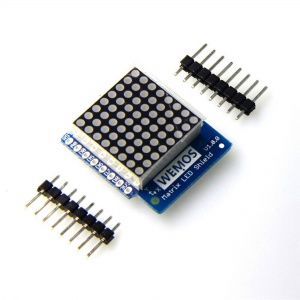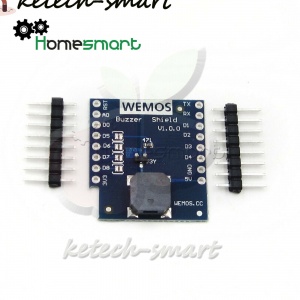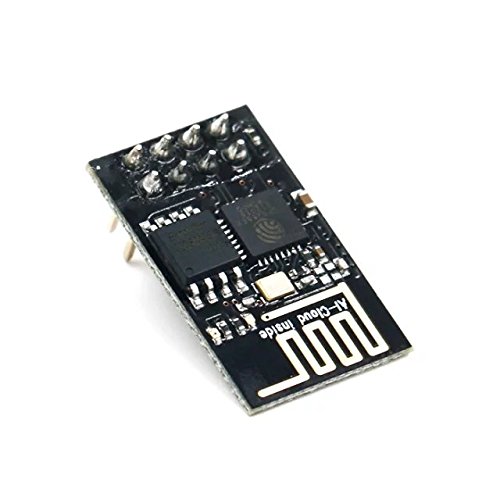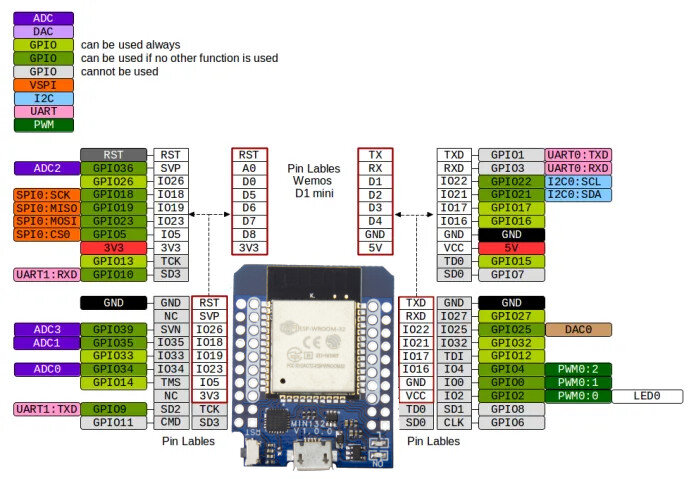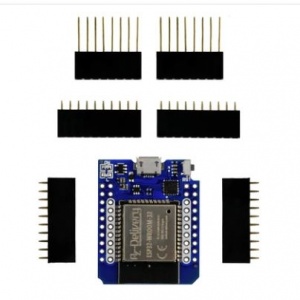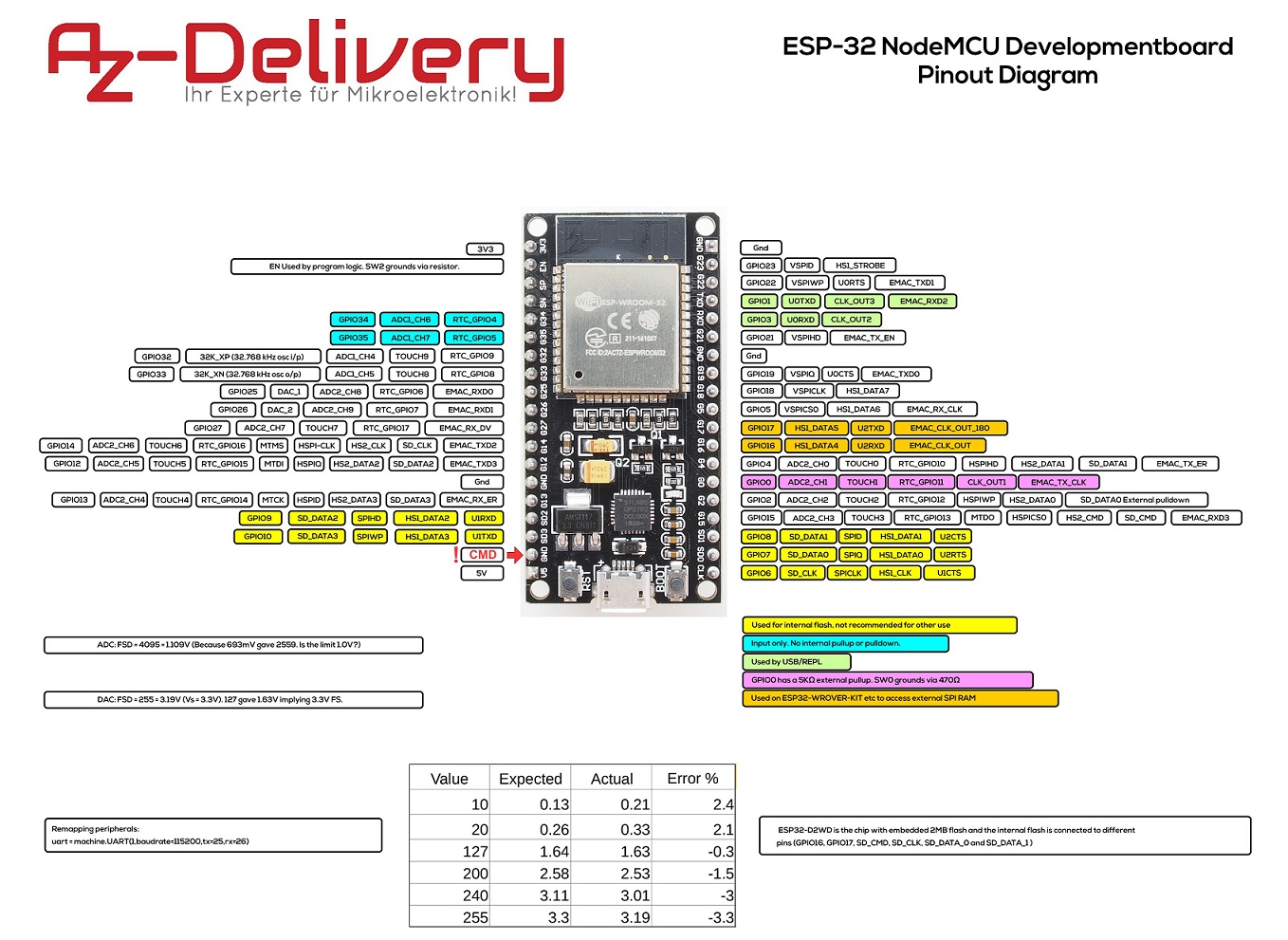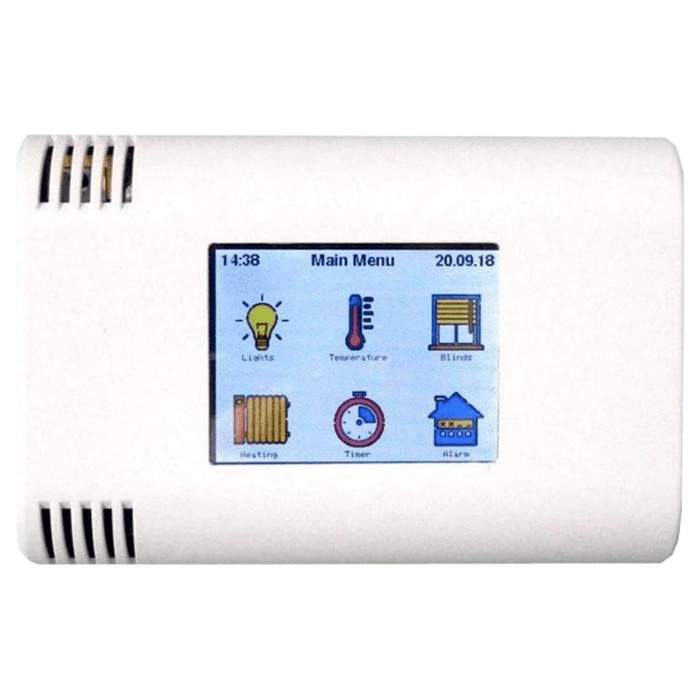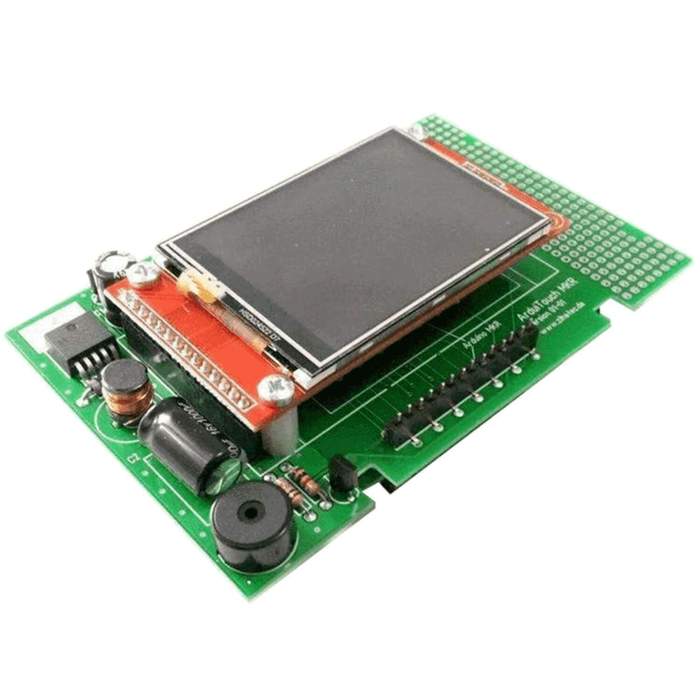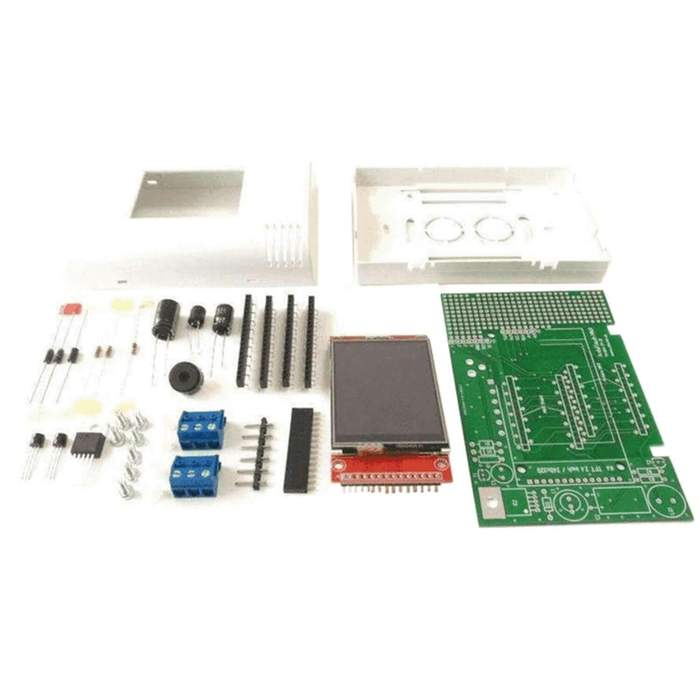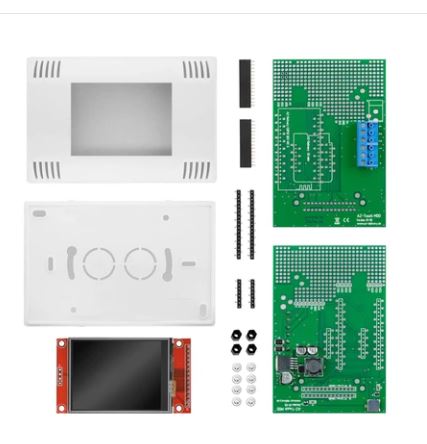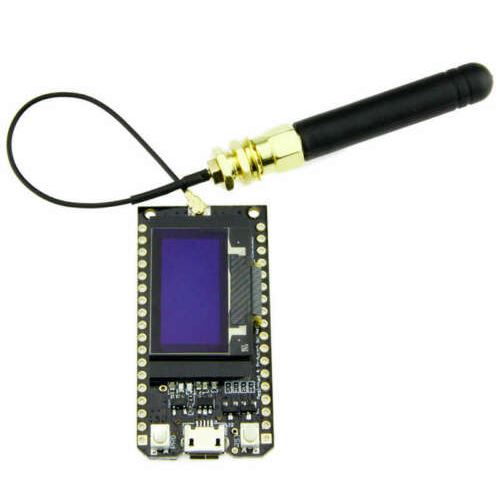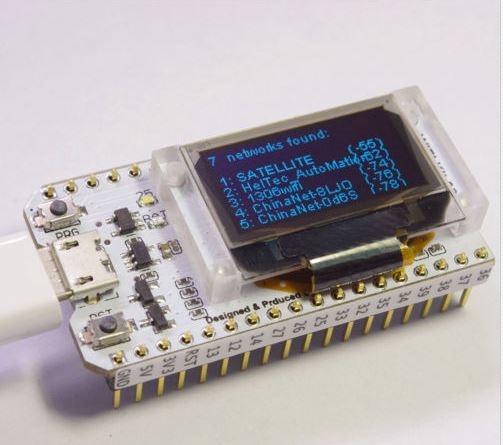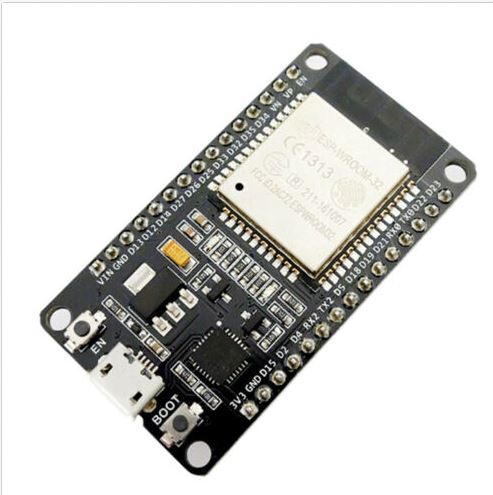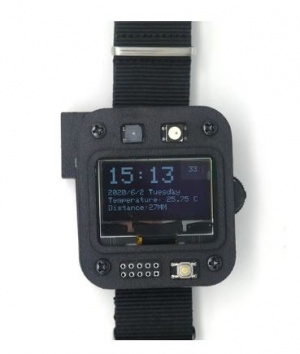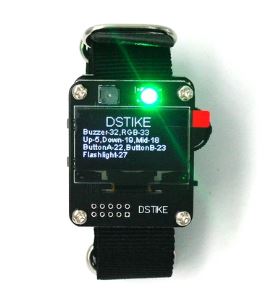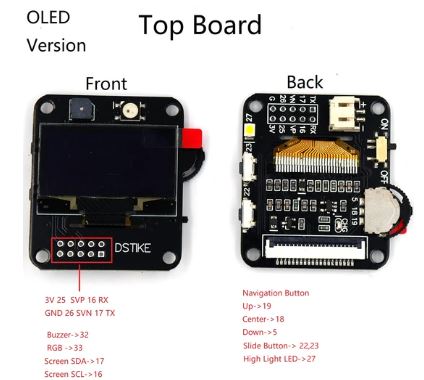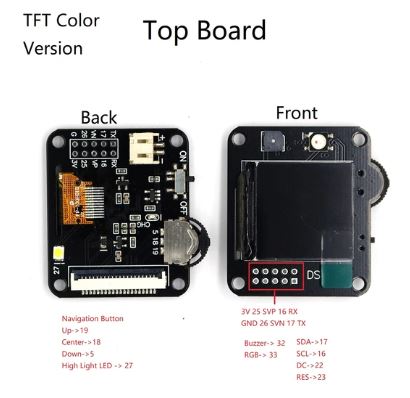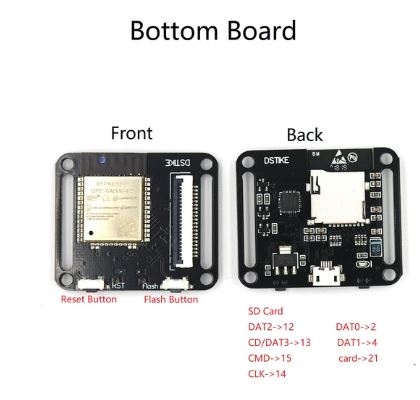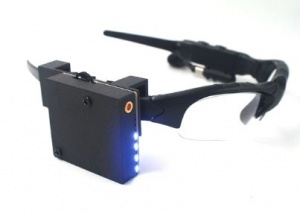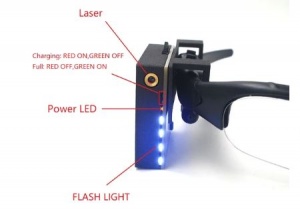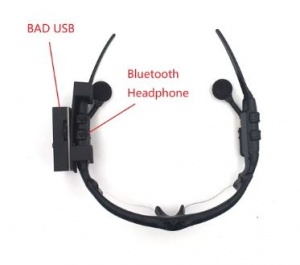ESP 8266: Unterschied zwischen den Versionen
Stefan (Diskussion | Beiträge) |
Stefan (Diskussion | Beiträge) (→ESP32 Signalgenerator) |
||
| Zeile 597: | Zeile 597: | ||
ESP32 Signal Generator CORZ.ORG | ESP32 Signal Generator CORZ.ORG | ||
https://corz.org/ESP32/square-sine-triangle-wave-signal-generator/ | https://corz.org/ESP32/square-sine-triangle-wave-signal-generator/ | ||
| − | code : ESP32_Signalgenerator_2 | + | code : ESP32_Signalgenerator_2 |
Code : SigGen Funktioniert nicht Webseite wird nicht angezeigt | Code : SigGen Funktioniert nicht Webseite wird nicht angezeigt | ||
Version vom 8. Oktober 2024, 07:54 Uhr
Inhaltsverzeichnis
- 1 Einführung & Programmierung des ESP8266 NodeMCU Boards
- 2 Random Nerd Turorials
- 3 ESP8266 Module - Starter Anleitung
- 4 Wiki
- 5 ESP Easy
- 6 Typen
- 6.1 NodeMCU ESP 8266
- 6.2 Wemos D1
- 6.3 Wemos D1 R32
- 6.4 Wemos D1 Mini
- 6.4.1 Boards
- 6.4.1.1 PIN Belegung
- 6.4.1.2 D1 Mini Pro
- 6.4.1.3 Battery Board
- 6.4.1.4 WeMos D1 Mini ProtoBoard Shield
- 6.4.1.5 WeMos D1 Mini Dual Base Shield
- 6.4.1.6 WeMos D1 Mini Triple Shield
- 6.4.1.7 WeMos D1 Mini LED Matrix Shield
- 6.4.1.8 WeMos D1 Mini Buzzer Shield
- 6.4.1.9 WEMOS D1 Mini DC Power Shield V1.1.0
- 6.4.1.10
- 6.4.1 Boards
- 6.5 ESP 01
- 6.6 ESP 07
- 6.7 ESP 12
- 6.8 ESP32
- 7 GP2Y10
- 8 ESP Easy Sensoren in FHEM einbinden
- 9 Tinkerblog : ESP2866 & ESPEasy
- 10 ESPEASY PN532
- 11 Statusdisplay mit ESP Easy, DLCD und FHEM
- 12 Fhem: LCD 2004 Display mit ESPEasy als Statusanzeige
- 13 ArduiTouch Wandgehäuse Set für ESP8266 und ESP32
- 14 NodeMCU und ESP8266 – Einstieg in die Programmierung
- 15 ESP Typen
- 15.1 Bluetooth Wifi ESP-32 Entwicklungs Board Modul Lora32 Lora 868Mhz Esp32 Lor M5J7
- 15.2 ESP32 WIFI chip 0.96 inch OLED Bluetooth WIFI Kit CP2102 32M module for arduino
- 15.3 ESP-32 Entwicklungsboard WiFi Bluetooth 2 in 1 Dual Core 2,4 GHz Antennenmodul
- 15.4 ESP32-Cam
- 15.5 DSTIKE
- 16 Library's
- 17 Visual Studio Code ESP32
- 18 Luc's Tech Blog
- 19 ESP8266 ESP-01 Modul
- 20 Webserver
- 20.1 ESP8266 ESP-01 Webserver
- 20.2 Dein eigener ESP8266 Webserver
- 20.3 Simple Webserver Using Arduino and ESP8266
- 20.4 ESP8266 NodeMCU Web Server: Display Sensor Readings in Gauges
- 20.5 ESP8266 DS18B20 Temperature Sensor with Arduino IDE (Single, Multiple, Web Server)
- 20.6 Display Sensor Readings in Gauges with ESP8266 Web Server
- 20.7 Luc's Webserver
- 20.7.1 ESP Webserver tutorial part 1 - textfields
- 20.7.2 ESP Webserver tutorial part 2 - button
- 20.7.3 ESP Webserver tutorial part 3 - button with status save and led
- 20.7.4 ESP Webserver tutorial part 4 - slider
- 20.7.5 ESP webserver tutorial part 5 - Neopixel control
- 20.7.6 Wifi Relay
- 20.7.7 Gauges and Linecharts in Javascript
- 20.7.8 ESP webpage with Gauges
- 20.7.9 ESP webpage with linechart
- 20.8 FreeBoard
- 21 ESP32 Signalgenerator
Einführung & Programmierung des ESP8266 NodeMCU Boards
https://tutorials-raspberrypi.de/einfuehrung-programmierung-esp8266-nodemcu-boards/
Random Nerd Turorials
https://randomnerdtutorials.com/
ESP8266 Module - Starter Anleitung
http://stefanfrings.de/esp8266/index.html
Wiki
https://de.wikipedia.org/wiki/ESP8266
ESP Easy
Get started Getting started with the ESP Easy takes a few basic steps. In most cases your ESP module comes with the AT firmware or the NodeMCU LUA firmware. We need to replace the existing Firmware with the ESP Easy firmware. We provide a (Windows only) flashtool to make this process an easy job. Below you find the general flow of this but an in depth guide is found here. 1. Download firmware as binary including flash tool 2. Connect the ESP to Windows PC Using either USB/UART of board or separate USB/TTL adapter 3. Write firmware using flash tool Note necessity for GPIO to be LOW to enter flashmode 4. Restart ESP. WiFi AP "ESP_Easy_0" will appear, password: configesp (prior to 2.0 the AP was named ESP_0) If you're not automatically taken to the log-in page, browse to 192.168.4.1 5. Search for you routers WiFi and connect (if you have multiple AP they will all show up with the same SSID name multiple times) 6. Reconnect to your WiFi and enter IP adress shown on previous screen
https://www.letscontrolit.com
https://www.letscontrolit.com/wiki/index.php/ESPEasy
https://github.com/letscontrolit/ESPEasy/releases
https://www.letscontrolit.com/wiki/index.php/History_of_ESP_Easy
the AP was named ESP_0). Connect to this access point with default password: configesp.
ESP Easy – Weboberfläche zur Konfiguration von ESP8266-Chips
https://waschto.eu/easyesp
GitHub
https://github.com/letscontrolit/ESPEasy/releases
Typen
NodeMCU ESP 8266
QuickStart
https://benlo.com/esp8266/esp8266QuickStart.html http://theelectromania.blogspot.de/2016/02/how-to-program-esp8266-esp-12e-nodemcu.html
Wemos D1
Wemos D1 R32
Wemos D1 Mini
Boards
PIN Belegung
D1 Mini DHT22 : PIN D4 D1 Mini Relais : PIN D1 D1 Mini Button : PIN D3
D1 Mini Pro
Battery Board
You can use D1 mini without usb cable, it's really wireless now. Put D1 mini anywhere, using this battery shield and a lithium Battery. Boost, just connect lithium Battery to this shield, power supply for the entire D1 mini system. Charging, when the battery run out, you do not need to unplug the battery, just using usb port to charging. Connect to lithium Battery (normal 3.3-4.2V) Charging port (normal 5V) Green LED, lights when charging is completed Red LED, lights when charging J1: setting max charging current, 0.5A or 1A.
WeMos D1 Mini ProtoBoard Shield
WeMos D1 Mini Dual Base Shield
Features: Dual bases for all Wemos D1 Mini modules and shields Duplicates I/O and power Warning: all I/O are designed to be 3.3V compliant only.
WeMos D1 Mini Triple Shield
Product Information For some shields, it is important that they are operated in parallel. (e.g., display shield and push-button ect.) There is this through-plated board. Many shields available: TF card reader, 1-button shield, relay shield (more to follow) ... Compatible with Arduino
WeMos D1 Mini LED Matrix Shield
Descritption: 8x8 dot matrix LED 8 step adjustable intensity
WeMos D1 Mini Buzzer Shield
Description: 100% brand new and high quality. Specifications: Frequency: 1kHz-3kHz 4 optional control pins (Default: D5) Size: 2.8x2.5cm/1.1x0.98inch Quantity: 1 Pc Note: 1.Please allow 1-2cm error due to manual measurement. pls make sure you do not mind before you bid. 2.Due to the difference between different monitors, the picture may not reflect the actual color of the item. Thank you!
WEMOS D1 Mini DC Power Shield V1.1.0
DC Power Shield V1.1.0 for WEMOS D1 mini Features: Input: 7-24V Max Current: 1A
ESP 01
ESP 07
ESP 12
ESP32
ESP32 D1 MNini
PinOut
ESP32 D1 Mini NodeMCU WiFi Modul + Bluetooth Internet Entwicklungsboard kompatibel mit Arduino
Dieses Entwicklungsboard verfügt über, das leistungsstarke ESP-WROOM-32 Modul, mit integrierter WiFi und Bluetooth Funktionalität (BR/EDR/BLE). Der ESP32 ist ein Chip, der mit der TSMC-Technologie für extrem niedrigem Stromverbrauch (Ultra-Low-Power-Management) konzipiert wurde. Dadurch können Sie trotz hoher Effizienz die beste Leistung und Performance erreichen. Das D1 Mini ESP32 überzeugt vor allem durch Robustheit, Vielseitigkeit und Zuverlässigkeit und ist damit allen denkbaren Anwendungsmöglichkeiten Ihres nächsten Projekts gewachsen.
Da der Ruhestrom des ESP32-Chips weniger als 5 μA beträgt eignet er sich besonders gut für den Einsatz mit Batterien oder Akkus. Das ESP32 D1 Mini besitzt ein ähnliches Layout der Pins zu dem herkömmlichen D1 Mini ESP8266-12F und ist daher mit dem meisten Zubehör für diesen pinkompatibel. Dazu bieten sich besonders Batterie-Schilde aus dem Hause AZ-Delivery an. Der bewährte ESP32-D0WDQ6-Chip befindet sich im Kern des entwickelten Moduls.
Dieses Mini Board kombiniert den beliebten Formfaktor des D1 Mini mit dem hoch performanten ESP32. Damit müssen sie selbst auf kleinstem Raum nicht auf Funktionalität verzichten.
Spezifikationen:
✔️Größe: 39 mm x 28,42 mm ✔️Gewicht: 12g ✔️Modul: ESP32-WROOM-32 ✔️Chipsatz: ESP32-D0WDQ6 ✔️USB-TTL CP2104 ✔️Speicherplatz: 4 MB ✔️ BT v4.2 (BR/EDR/BLE) ✔️Eingebaute PCB-Antenne ✔️ OM: 448 KB - SRAM: 520 KB ✔️ WiFi: 2,4 GHz ✔️Betriebsspannung: 5V DC
ESP32 NodeMCU WROOM32
GPIO-21 SCL GPIO-21 SDA
https://docs.espressif.com/projects/esp-idf/en/latest/esp32/hw-reference/esp32/get-started-devkitc.html
ESP32 NodeMCU Module WLAN WiFi Development Board mit CP2102 (Nachfolgermodell zum ESP8266)
ESP32 CAM
https://www.fambach.net/esp32-cam-modul/
https://tutorials-raspberrypi.de/esp32-cam-livestream-tutorial-esp8266-nodemcu-kamera/
GP2Y10
https://www.letscontrolit.com/wiki/index.php/GP2Y10
ESP Easy Sensoren in FHEM einbinden
https://waschto.eu/easyesp-sensoren-in-fhem-einbinden
Tinkerblog : ESP2866 & ESPEasy
https://tinkerblog.net/wemos-d1-mini-node-mcu-esp-easy/
ESPEASY PN532
https://www.letscontrolit.com/wiki/index.php/PN532
Statusdisplay mit ESP Easy, DLCD und FHEM
https://waschto.eu/statusdisplay-mit-esp-easy-dlcd-und-fhem/
Fhem: LCD 2004 Display mit ESPEasy als Statusanzeige
https://blog.moneybag.de/fhem-lcd-2004-display-mit-espeasy-als-statusanzeige/
ArduiTouch Wandgehäuse Set für ESP8266 und ESP32
Wandgehäuse 120mm x 80mm x 35mm (W x H x D). 2,4 Zoll (6,14cm) Farb-TFT mit 320 x 240 Pixeln (ILI9341). Resistiver Touchscreen (Touchcontroller XPT2046) Integrierter 5V Spannungsregler (Eingangsspannung 9 - 35V DC). Eingebauter Piezosummer.
https://www.az-delivery.de/blogs/azdelivery-blog-fur-arduino-und-raspberry-pi/arduitouch-wandgehaeuseset-mit-touchscreen-fuer-esp32-und-esp8266
https://www.hwhardsoft.de/english/projects/arduitouch-esp/
AZ-Touch MOD Rev B
NodeMCU und ESP8266 – Einstieg in die Programmierung
https://www.mikrocontroller-elektronik.de/nodemcu-esp8266-tutorial-wlan-board-arduino-ide/
ESP Typen
Bluetooth Wifi ESP-32 Entwicklungs Board Modul Lora32 Lora 868Mhz Esp32 Lor M5J7
https://randomnerdtutorials.com/ttgo-lora32-sx1276-arduino-ide/
Hauptmerkmale: SX1276-Chip basierend auf ESP32-WLAN, 868 - 915 MHz-Frequenz, hohe Empfindlichkeit über -148 dBm, + 20 dBm Ausgangsleistung, hohe Zuverl? ssigkeit, lange übertragungsdistanz Integrierte 32 MB Flash-Wi-Fi-Antenne, 0,96-Zoll-Blau-OLED-Display, Lithium-Batterie-Ladeschaltung, CP2102-Schnittstelle und serieller USB-Chip, perfekte Unterstützung für die Arduino-Entwicklungsumgebung, kann für die Programmprüfung verwendet werden, die Produktentwicklung ist sehr einfach und schnell Spezifikationen: Betriebsspannung: 3,3 - 7 V Betriebstemperaturbereich: -40 bis 90 ℃ (-40 bis 194 ° F) Unterstützung für Sniffer-Softwareprotokollanalyse-, Stations-, SoftAP- und Wi-Fi Direct-Modi Datenraten: 150 Mbps bei 11n HT40, 72 Mbps bei 11n HT20, 54 Mbps bei 11 g, 11 Mbps bei 11b Sendeleistung: 19,5 dBm bei 11b, 16,5 dBm bei 11 g, 15,5 dBm bei 11n Empf?ngerempfindlichkeit bis -98 dBm Durchgehender UDP-Durchsatz: 135 Mbps Farbe: schwarz Material: Metall + PC Lieferumfang: 1 * Bluetooth WIFI ESP-32 Entwicklungsboard-Modul Erinnerungen:
1) Die 868/915 MHz Antenne muss mit der IPEX-Schnittstelle verbunden sein (wenn die Antenne nicht angeschlossen ist, kann dies den LoRa-Chip besch?digen) 2) Wenn der Akku voll ist, funktioniert die blaue LED nicht mehr. 3) Achten Sie bei der Verwendung auf das Plus und Minus der Batterie, da diese sonst bescädigt wird. 4) Beim Touchscreen-Eingangssignal des IO-Ports müssen Sie den 100nF-Pull-Down-Kondensator zu diesem Pin hinzufügen.
ESP32 WIFI chip 0.96 inch OLED Bluetooth WIFI Kit CP2102 32M module for arduino
https://heltec.org/project/wifi-kit-32-v3/
WIFI Kit 8 is developed by our company cost-effective Internet of things development program, the main chip using ESP8266, with CP2014USB to serial chip, lithium battery interface and charge and discharge circuit, 32MByte Flash, WIFI antenna, 0.91-inch OLED display.
Can be programmed in Ard uino and NodeMCU environments. Operation is consistent with NodeMCU.
Leads all pins of ESP8266 12 digital pins can be configured to read, write, IIC, SPI, the middle, PWM and other functions 1 AD input Integrated 0.91-inch 128 * 32 OLED Working voltage: 3.3V ~ 7V
ESP-32 Entwicklungsboard WiFi Bluetooth 2 in 1 Dual Core 2,4 GHz Antennenmodul
Eigenschaften: 100% nagelneu und hohe Qualität ! Typ: ESP32 Entwicklungsboard Hohes Preis-Leistungs-Verhältnis Kleines Volumen, leicht in andere Produkte eingebettet Starke Funktion mit Unterstützung LWIP-Protokoll, Freertos Unterstützen Sie 3 Modi: AP, STA und AP + STA Unterstützung Lua-Programm, leicht zu entwickeln Einführung: ESP32 ist bereits integrierte Antenne und HF-Balun, Leistungsverstärker, rauscharme Verstärker, Filter, und Energiemanagement-Modul. Die gesamte Lösung nimmt den geringsten Platz auf der Leiterplatte ein. Dieses Board wird mit 2,4 GHz Dual-Mode-Wi-Fi und Bluetooth-Chips von TSMC 40nm Low-Power-Technologie verwendet, Leistung und HF-Eigenschaften am besten, die sicher, zuverlässig und skalierbar für eine Vielzahl von Anwendungen ist.
ESP32-Cam
https://www.letscontrolit.com/forum/viewtopic.php?t=6710
https://hackspace.raspberrypi.org/articles/esp32-cam-review
https://community.home-assistant.io/t/esp32-cam-working/109140/22 https://randomnerdtutorials.com/esp32-cam-video-streaming-face-recognition-arduino-ide/
https://www.mikrocontroller.net/topic/esp32-cam-entwicklungskit
https://randomnerdtutorials.com/esp32-cam-take-photo-display-web-server/
https://www.fambach.net/esp32-cam-modul/
https://www.hackster.io/news/using-a-camera-with-the-esp32-9d6994b34a2b
https://www.youtube.com/watch?v=5XCb3t8J4Kg https://www.youtube.com/watch?v=q7Z_XnBYFhY
http://iot-bits.com/esp32/esp32-flash-download-tool-tutorial/
http://iot-bits.com/esp32/getting-started-with-esp32-esp-idf-part-1/
https://www.fambach.net/ispy/
DSTIKE
DSTIKE Bad Watch
https://dstike.com/products/dstike-bad-watch
DSTIKE ESP32 Watch DevKit (Two versions)
https://dstike.com/products/dstike-esp32-watch-devkit
ESPEasy
LED Switch input - Switch LED GPIO-27 Button Switch input - Switch Center GPIO-18 Switch input - Switch Up GPIO-19 Switch input - Switch Down GPIO-5 Switch input - Switch S1 GPIO-22 Switch input - Switch S2 GPIO-23 geht nicht
LED Switch input - Switch Side_LED GPIO-27
Buzzer rtttl,32:d=10,o=6,b=180,c,e,g
NeoPixel Output - NeoPixel (Basic) RGB GPIO-33 neopixel,1,255,100,20
Display - OLED SSD1306/SH1106 Framed OLED I2C SDA: GPIO-17 SCL: GPIO-16 Btn: -
What makes it special?
Small size: 3.8x4.5cm Height:1.5cm Double 4 layer board 600mAh battery inside On/OFF Power Switch OLED version:1.3OLED SH1106(SDA-17,SCL-16) TFT color version: ST7789 240*240 LCD(SDA-17,SCL-16,DC-22,RES-23) Buzzer-32 WS2812b RGB LED-33 Navigation Button(Up-19,Center-18,Down-5) OLED version external slide button(22,23) Highlight LED(27) Indicate charging LED(On means Charging,OFF means Full) Reset and Flash Button at Bottom board Breakout GPIOs(TX,RX,17,16,SVP,SVN,25,26,GND,3V)
SD Card support
GPIO12--DAT2 GPIO13--DAT3 GPIO15--CMD GPIO14--CLK GPIO2--DAT0 GPIO4--DAT1 GPIO21--card
Code
ESP32WatchTest OLED
https://github.com/lspoplove/D-duino-project/blob/master/ESP32WatchDev/ESP32WatchTest.ino
ESP32WatchTest TFT
OLED
https://github.com/ThingPulse/esp8266-oled-ssd1306
TFT
https://github.com/lspoplove/Arduino-ST7789-Library
NEOPixel
https://github.com/adafruit/Adafruit_NeoPixel
#include <Adafruit_NeoPixel.h> #include "SH1106.h" #define BUTTON_PRESS 18 #define BUTTON_LEFT 5 #define BUTTON_RIGHT 19 #define PIXEL_PIN 33 // Digital IO pin connected to the NeoPixels. #define PIXEL_COUNT 1 #define BUZZER 32 #define BUTTON_ON 22 #define BUTTON_OFF 23 #define FLASHLIGHT 27 SH1106 display(0x3c,17,16); Adafruit_NeoPixel strip = Adafruit_NeoPixel(PIXEL_COUNT, PIXEL_PIN, NEO_GRB + NEO_KHZ800);
Freenove WS2812 Lib for ESP32
https://github.com/Freenove/Freenove_WS2812_Lib_for_ESP32
Freenove_ESP32_WS2812 strip = Freenove_ESP32_WS2812(LEDS_COUNT, LEDS_PIN, CHANNEL, TYPE_GRB); Construction. Create a strip object. strip.begin() Initialization data, ready for communication.
strip.setLedColorData(id, color); strip.setLedColorData(id, r, g, b); Send the color data of the specified LED to the controller. Display color change after calling show function. id: the index of led. color: color value. egg, 0xFF0000 is RED color. r,g,b: color value. 0-255.
strip.show(); Immediately display the color data that has been sent.
strip.setLedColor(id, color); strip.setLedColor(id, r, g, b); Send color data and display it immediately. It is equivalent to "strip.setLedColorData(id, color); strip.show();" id: the index of led. color: color value. egg, 0xFF0000 is RED color. r,g,b: color value. 0-255.
strip.Wheel(i)
A simple color picker. i: 0-255.
#include "Freenove_WS2812_Lib_for_ESP32.h"
#define LEDS_COUNT 1
#define LEDS_PIN 33
#define CHANNEL 0
Freenove_ESP32_WS2812 strip = Freenove_ESP32_WS2812(LEDS_COUNT, LEDS_PIN, CHANNEL, TYPE_GRB);
u8 m_color[5][3] = { {255, 0, 0}, {0, 255, 0}, {0, 0, 255}, {255, 255, 255}, {0, 0, 0} };
int delayval = 100;
void setup() {
Strip.begin();
strip.setBrightness(10); }
void loop() {
for (int j = 0; j < 5; j++) {
for (int i = 0; i < LEDS_COUNT; i++) {
strip.setLedColorData(i, m_color[j][0], m_color[j][1], m_color[j][2]);
strip.show();
delay(delayval); }
delay(500); } }
NTP
https://randomnerdtutorials.com/esp32-ntp-client-date-time-arduino-ide/
Time
https://github.com/PaulStoffregen/Time
SPIFFS - Install ESP32 Filesystem Uploader in Arduino IDE
https://randomnerdtutorials.com/install-esp32-filesystem-uploader-arduino-ide/
https://github.com/me-no-dev/arduino-esp32fs-plugin https://github.com/me-no-dev/arduino-esp32fs-plugin/releases/
https://randomnerdtutorials.com/esp32-web-server-spiffs-spi-flash-file-system/
DSTIKE BAD GLASS
https://dstike.com/products/dstike-bad-glass
DSTIKE Deauther Watch V2
https://dstike.com/products/dstike-deauther-watch-v2
Library's
DavidAntliff / esp32-rotary-encoder
https://github.com/igorantolic/ai-esp32-rotary-encoder
igorantolic / ai-esp32-rotary-encoder
https://github.com/DavidAntliff/esp32-rotary-encoder
Visual Studio Code ESP32
https://www.heise.de/ratgeber/Visual-Studio-Code-Installation-und-Konfiguration-fuer-ESP-IDF-6656091.html https://raydiy.de/arduino-esp32-programmieren-mit-platformio-und-visual-studio-code/ https://www.youtube.com/watch?v=0lCem8XTKMs https://www.youtube.com/watch?v=0lCem8XTKMs https://www.youtube.com/watch?v=8ggF7iVrhZw
Luc's Tech Blog
http://lucstechblog.blogspot.com/p/index-of-my-stories.html
ESP8266 ESP-01 Modul
https://wolles-elektronikkiste.de/esp8266-esp-01-modul
Webserver
ESP8266 ESP-01 Webserver
https://www.hackster.io/ROBINTHOMAS/esp8266-esp-01-webserver-7248ca
Dein eigener ESP8266 Webserver
https://polluxlabs.net/esp8266-projekte/dein-eigener-esp8266-web-server/
Simple Webserver Using Arduino and ESP8266
https://www.instructables.com/Simple-Webserver-Using-Arduino-UNOMega-and-ESP8266/
ESP8266 NodeMCU Web Server: Display Sensor Readings in Gauges
https://randomnerdtutorials.com/esp8266-web-server-gauges/
ESP8266 DS18B20 Temperature Sensor with Arduino IDE (Single, Multiple, Web Server)
https://randomnerdtutorials.com/esp8266-ds18b20-temperature-sensor-web-server-with-arduino-ide/
Display Sensor Readings in Gauges with ESP8266 Web Server
https://microcontrollerslab.com/esp8266-nodemcu-web-server-gauges/#google_vignette
Luc's Webserver
ESP Webserver tutorial part 1 - textfields
http://lucstechblog.blogspot.com/2019/07/esp-webserver-tutorial-part-1-textfields.html
ESP Webserver tutorial part 2 - button
http://lucstechblog.blogspot.com/2019/07/esp-webserver-tutorial-part-2-button.html
ESP Webserver tutorial part 3 - button with status save and led
http://lucstechblog.blogspot.com/2019/08/esp-webserver-tutorial-part-3-button.html
ESP Webserver tutorial part 4 - slider
http://lucstechblog.blogspot.com/2019/08/esp-webserver-tutorial-part-4-slider.html
ESP webserver tutorial part 5 - Neopixel control
https://lucstechblog.blogspot.com/2019/09/esp-webserver-tutorial-part-5-neopixel.html
Wifi Relay
https://lucstechblog.blogspot.com/2018/01/wifi-relay.html
Gauges and Linecharts in Javascript
http://lucstechblog.blogspot.com/2019/11/gauges-and-linecharts-in-javascript.html
https://developers.google.com/chart?hl=de
ESP webpage with Gauges
http://lucstechblog.blogspot.com/2019/11/esp-webpage-with-gauges.html
ESP webpage with linechart
http://lucstechblog.blogspot.com/2019/11/esp-webpage-with-linechart.html
FreeBoard
http://mprojekte.de/freeboard/index.html http://freeboard.github.io/freeboard/
Freeboard
http://lucstechblog.blogspot.com/2019/10/freeboard.html
Freeboard revisisted part 1
http://lucstechblog.blogspot.com/2023/08/freeboard-revisisted-part-1.html
Freeboard revisited 2
http://lucstechblog.blogspot.com/2023/08/freeboard-revisited-2.html
Freeboard revisited 3: freeboard console
http://lucstechblog.blogspot.com/2023/08/freeboard-revisited-3-freeboard-console.html
Freeboard revisited 4: install Freeboard on Raspberry
http://lucstechblog.blogspot.com/2023/09/freeboard-revisited-4-install-freeboard.html
Freeboard revisited 5: install add-ons
http://lucstechblog.blogspot.com/2023/09/freeboard-revisited-5-install-add-ons.html
ESP32 Signalgenerator
ESP32 Wrover Module, WEMOS D1 R32, ESP32 DEV Module
https://github.com/krzychb/dac-cosine
ESP32 Signal Generator CORZ.ORG https://corz.org/ESP32/square-sine-triangle-wave-signal-generator/ code : ESP32_Signalgenerator_2
Code : SigGen Funktioniert nicht Webseite wird nicht angezeigt https://github.com/vdeschwb/esp32-signal-generator https://www.reddit.com/r/esp32/comments/plwmy3/using_the_esp32_as_a_multifunction_waveform/?rdt=42053
A Multipurpose Signal Generator https://circuitcellar.com/research-design-hub/projects/a-multipurpose-signal-generator/
Sinus
https://github.com/bhall66/DacTone
Sinus Signal Generator from 18Hz to 250kHz https://www.esp32.com/viewtopic.php?t=10321 code : ESP32_DAC_FuncGen2
code : ESP32_Signalgenerator_3 https://github.com/pgiacalo/PlatformIO/tree/main/ESP32_function_generator/src https://www.youtube.com/watch?v=w6EJnYOyPNs
Rechteck Sinus Dreieck
Guide to creating a simple signal generator with ESP32 https://www.techrm.com/guide-to-creating-a-simple-signal-generator-with-esp32/ code : ESP32_Signalgenerator_1
code : ESP32_DAC_FuncGen1 Funktioniert nicht Compilation error: 'i2s_write_bytes' was not declared in this scope https://dl1dmw.darc.de/esp32_fgen.html
